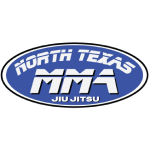Strength or Technique
Strength is the most important attribute of a martial artist.
A statement like this is sure to raise some eyebrows and even provoke a quick and angry “No!” from many people. In all martial arts disciplines, it is traditional to view technique as the most important aspect of one’s training and development. After all, it is technique that separates martial arts from thoughtless arm-waving, scratching, poor attempts at kicking, and countless unintended falls that happen in street fights from untrained people. If only these poor souls had a bit of training, then they wouldn’t look so silly in YouTube videos. It is not just tradition, but time-tested wisdom that technique is an essential element in martial arts training.
So how can a blog post from a gym like NTMMA make the claim that strength is more important? Well, let’s take a step back from martial arts and think about living life in general. Physical strength is the most important thing in life. This does not mean that you must bench press 500 pounds or become a bodybuilder to live a healthy life. But this statement does make some implications about basic biology and how we, biological organisms, navigate life.
Strength is the ability to produce force against an external resistance. This includes things like a 500-pound bench press (for the small number of humans who have ever achieved such a feat) but also includes actions like getting out of bed, squatting down to the toilet seat, picking up the grandkids, mowing the lawn, and helping a friend load the truck. If you lack the ability to produce force against such external resistances, then you will not live a fun and healthy life. Basic strength is a must for independent, healthy living.
In JiuJitsu, the situation is even more clear. You can learn all the moves. You can understand the mechanics of throws and sweeps and submissions. But if you aren’t strong enough to hold on to the grip or to move yourself under your partners hips or make space for yourself to breathe, then you will have a hard time on the mats. All the understanding and smarts that come with studying martial arts will be meaningless if one cannot apply that knowledge in real time against an unwilling opponent. To do that, one must be able to apply some force to an external resistance (= use strength). Physical strength is the most important thing in martial arts. Without it, a martial artist cannot perform any technique.
A famous Judo athlete knew this. His name was Kimura Masahiko (The “kimura” submission has been renamed in his honor since he popularized the submission by finishing many Judo and wrestling matches with it). Kimura was a big guy. It was said that he would eat 7-8 bowls of rice for breakfast and 12 bowls for dinner with different fish throughout the day. After hours of training in the Kodokan, he would go to a smaller gym in the area with weights and do squats and bench press. Afterwards, he would find someone there who would let themselves be used as a throwing dummy, practicing more Osoto Gari’s on them. At the time, strength training was uncommon in Judo, and even frowned upon, as many Judo masters believed it would make one slower. Kimura disproved this and showed the world that a bigger engine does not make a slower car. In his many victories, he demonstrated that strength training and martial arts training go hand-in-hand (See Christopher Clarke’s 2015 book on Kimura for more).
Again, this does not mean that JiuJitsu athletes or boxers must become competitive weight lifters. But it does mean they will learn how to lift weights as they train and incorporate strength training into their careers as martial artists. If you are interested in learning the basics of 5 primary barbell exercises that are proven to build strength, come join us Saturday mornings at 8AM as we practice the squat, press, deadlift, bench press, and power clean.
